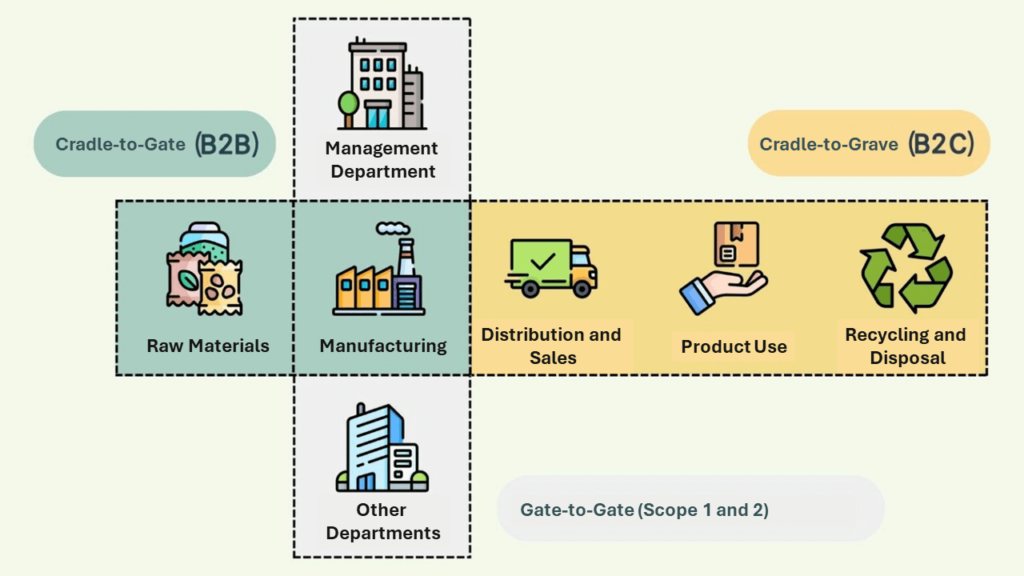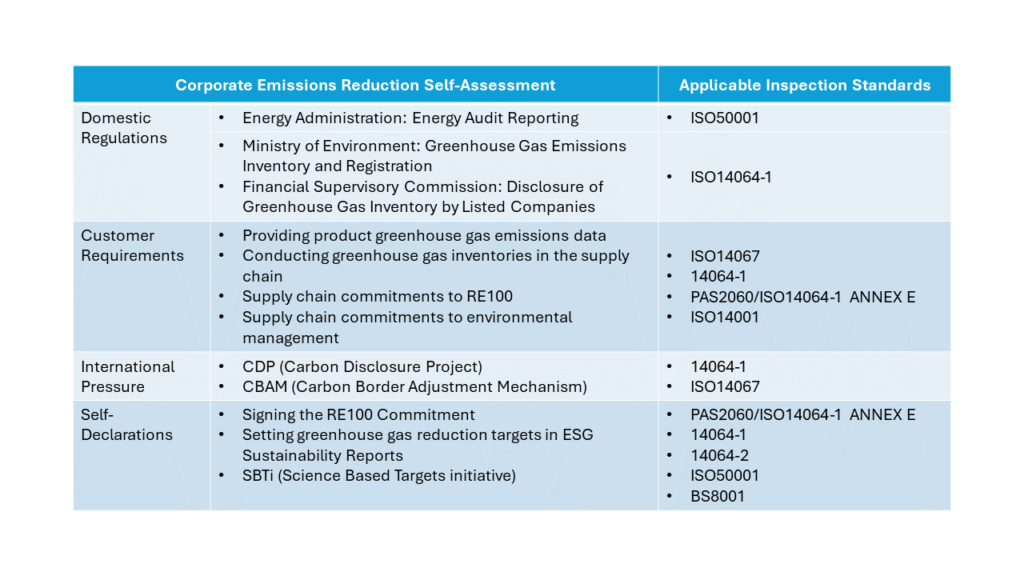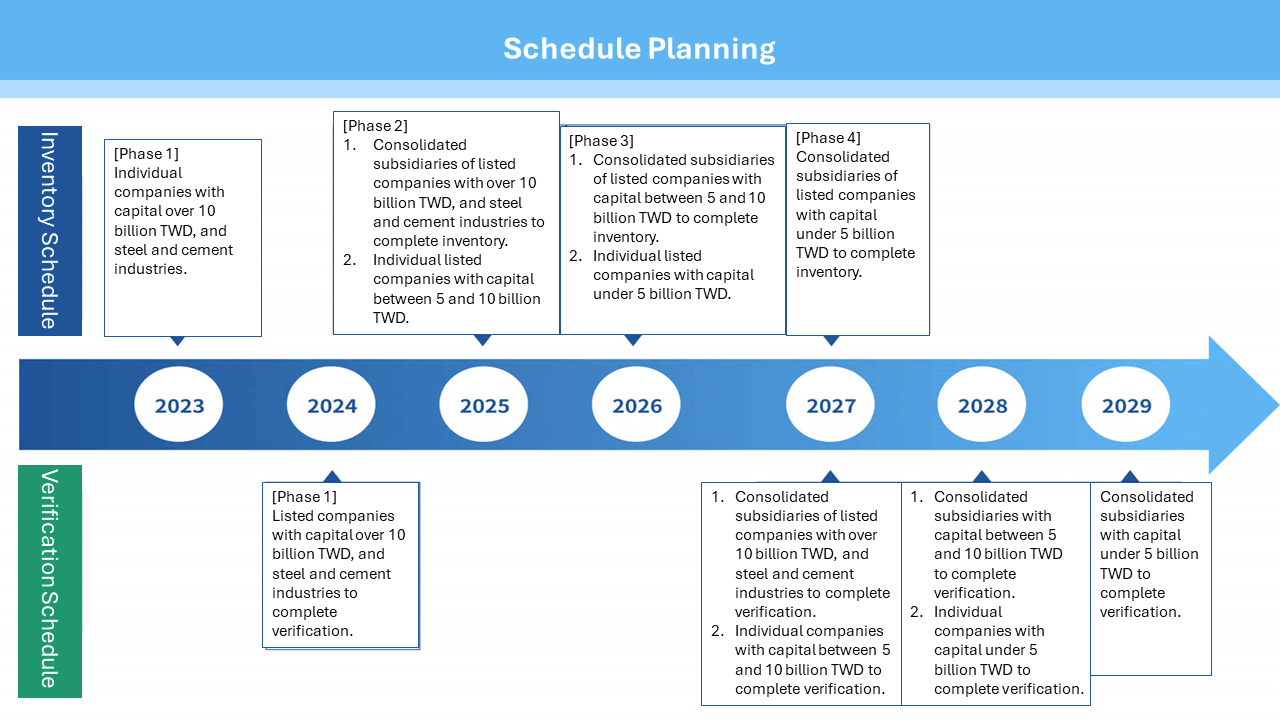
Greenhouse Gas and Carbon Footprint Inventory
What is a Greenhouse Gas and Carbon Footprint Inventory?
The Greenhouse Gas and Carbon Footprint Inventory includes the following certification standards: ISO 14064-1, ISO 14064-2, ISO 14067, and ISO 50001. These are all related certifications for greenhouse gas and carbon footprint inventories, and the primary differences between these standards lie in their focus and purpose.
ISO 14064-1 focuses on “organizations” and covers the total greenhouse gas emissions of a company, as well as how to standardize these emission data to create a report known as an “Inventory.” The scope of this standard applies to a “gate-to-gate” assessment, focusing on emissions within the organization.
ISO 14064-2 targets “projects” and assesses a company’s carbon reduction and emission reduction strategies, including the feasibility of the strategy, expected outcomes, and assessment methods. This standard evaluates on a project basis, considering the overall organizational emissions.
ISO 14067, concerning “product” carbon footprints, quantifies the carbon emissions of a product (which could be goods or services) throughout its entire lifecycle and its environmental impact. Depending on the product characteristics, the scope can range from B2B’s “cradle-to-gate” to B2C’s “cradle-to-grave.”
ISO 50001, the Energy Management System standard, aims to help organizations achieve higher energy efficiency, reduce energy consumption, minimize energy waste, and lower related energy costs. It encourages organizations to establish, implement, maintain, and improve energy management systems to ensure effective use of energy.

What are the benefits of implementing a Greenhouse Gas and Carbon Footprint Inventory for businesses? What issues does it reduce?
In the context of global challenges such as climate change and sustainable development, the implementation of greenhouse gas and carbon footprint management standards like ISO 14064-1, ISO 14064-2, ISO 14067, and ISO 50001 offers significant value and meaningful benefits to businesses. These include:
Compliance with the EU Carbon Border Adjustment Mechanism (CBAM):
By obtaining these certifications, companies can demonstrate that their greenhouse gas management complies with international standards, addressing the requirements of the EU Carbon Border Adjustment Mechanism (CBAM). This reduces trade risks and facilitates access to the EU market.
Meeting Global Climate Disclosure Project (CDP) Requirements:
Certification in greenhouse gas and carbon footprint management standards helps companies establish a reliable greenhouse gas management system. This provides accurate data to meet the requirements of the Global Climate Disclosure Project (CDP), showcasing the company’s leadership in addressing climate change issues.
Improving Dow Jones Sustainability Index (DJSI) Scores:
By achieving certification in greenhouse gas and carbon footprint management standards, companies can demonstrate their efforts and achievements in managing greenhouse gases. This enhances their scores in the Dow Jones Sustainability Index (DJSI), attracting more attention and investment from ESG-focused investors.
Compliance with Domestic Regulatory Requirements:
The Climate Change Response Act provides a robust tool for businesses to showcase their exemplary practices in managing greenhouse gases domestically. It meets the requirements of the Ministry of Environment and aligns with the Financial Supervisory Commission’s expectations for corporate ESG risk management.
Here are the suggested standards for review, which businesses can consider based on their situation:

How long does it take to implement ISO 14064-1 Greenhouse Gas Inventory and ISO 14067 Product Carbon Footprint?
The time required to implement ISO 14064-1 Greenhouse Gas Inventory and ISO 14067 Product Carbon Footprint depends on the specific needs of the business, including the scope and the number of personnel involved. Typically, the implementation process takes about 6 to 9 months, depending on the company’s specific situation.
What is the validity period of certificates related to Greenhouse Gas and Carbon Footprint Inventories?
Certificates related to Greenhouse Gas and Carbon Footprint Inventories are valid for three years, and they require an annual review.
What are the government regulations and timelines for Greenhouse Gas Inventories and Carbon Footprints?


